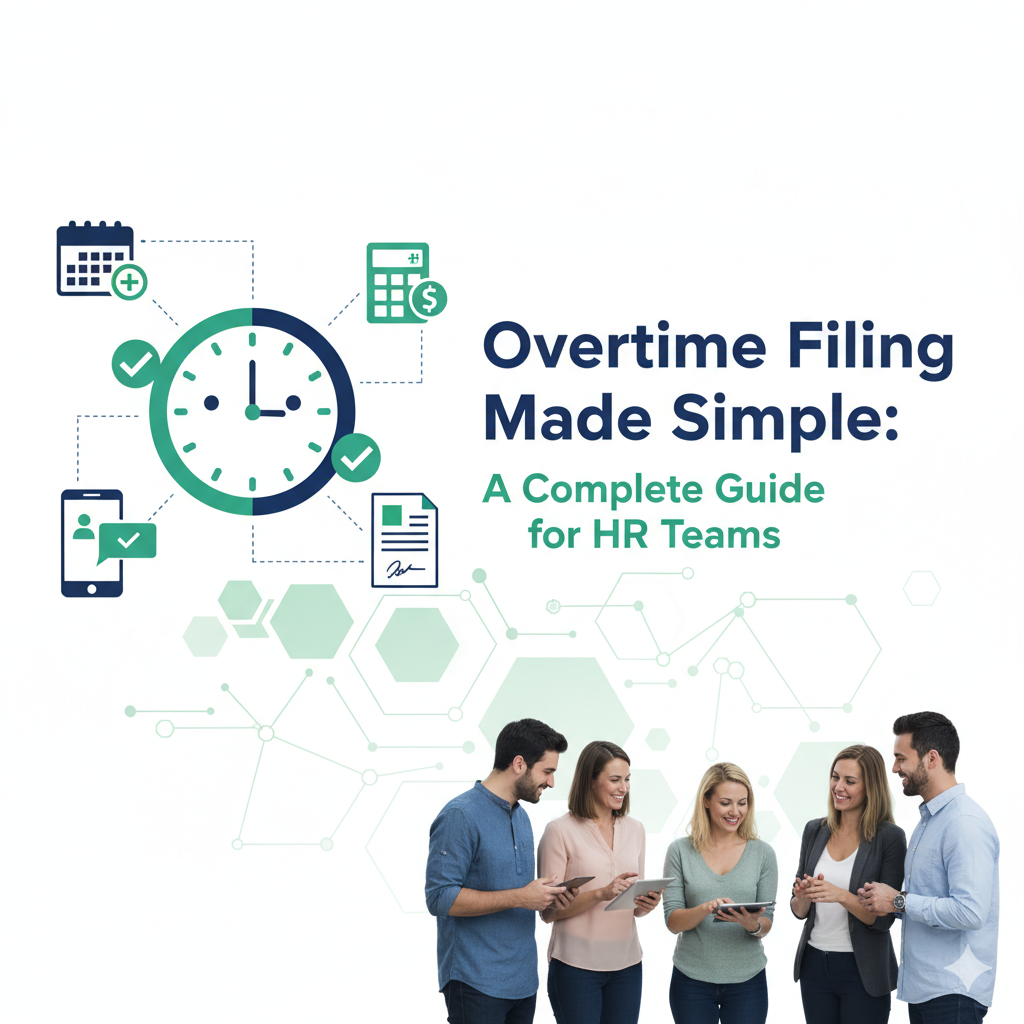Managing overtime can be a challenge for HR teams — from tracking employee hours to ensuring compliance with labor laws. A single mistake can lead to payroll errors, employee dissatisfaction, or even legal risks. That’s why a clear, structured process for overtime filing is essential.
In this guide, we’ll break down the overtime filing process step-by-step, explore common challenges, and share best practices to help HR teams stay organized and compliant.
What Is Overtime Filing and Why It Matters
Overtime filing is the process of recording, approving, and compensating employees who work beyond their regular hours.
Why It’s Important:
- Compliance: Labor laws require accurate overtime tracking.
- Employee Trust: Fair and timely compensation keeps morale high.
- Financial Accuracy: Prevents overpayments and underpayments.
Key Steps in the Overtime Filing Process
Step 1: Establish Clear Overtime Policies
- Define what qualifies as overtime (daily vs. weekly thresholds).
- Set approval workflows (manager or HR sign-off).
- Communicate policies to all employees.
Step 2: Track Employee Hours Accurately
- Use a digital attendance system to avoid manual errors.
- Ensure real-time logging of hours to prevent discrepancies.
Step 3: Submit Overtime Requests
- Employees file requests through a form or HRIS system.
- Include date, hours worked, and reason for overtime.
Step 4: Review and Approve
- Managers verify requests based on schedules and project needs.
- HR ensures compliance with labor regulations before approval.
Step 5: Process in Payroll
- Approved overtime is automatically calculated in payroll.
- Employees receive accurate payment in the next pay cycle.
Common Challenges HR Teams Face
- Manual Data Entry: Leads to errors and delays.
- Lack of Transparency: Employees may feel overtime approvals are unfair.
- Compliance Risks: Missing legal thresholds for overtime pay.
- Time-Consuming Approvals: Slow workflows can delay payroll processing.
Best Practices for Simplifying Overtime Filing
- Go Digital: Use an HRIS & payroll system to automate tracking and approvals.
- Set Clear Deadlines: Require overtime requests to be filed within a specific timeframe.
- Train Managers: Ensure they know how to review and approve requests fairly.
- Audit Regularly: Periodically review overtime reports for trends or discrepancies.
How Technology Can Help
Modern HRIS & Payroll Systems make overtime filing seamless:
- Automated timesheets & attendance integration
- Instant overtime calculation with compliance checks
- Real-time dashboards for HR and managers
- Faster payroll processing with fewer errors
Conclusion
Overtime filing doesn’t have to be stressful. By setting clear policies, automating the process, and using the right tools, HR teams can save hours of administrative work — while ensuring employees are paid accurately and on time.
📅 Want to see how automation can simplify your overtime filing process?
👉 Book a Free Demo and experience a smarter way to manage HR and payroll.




